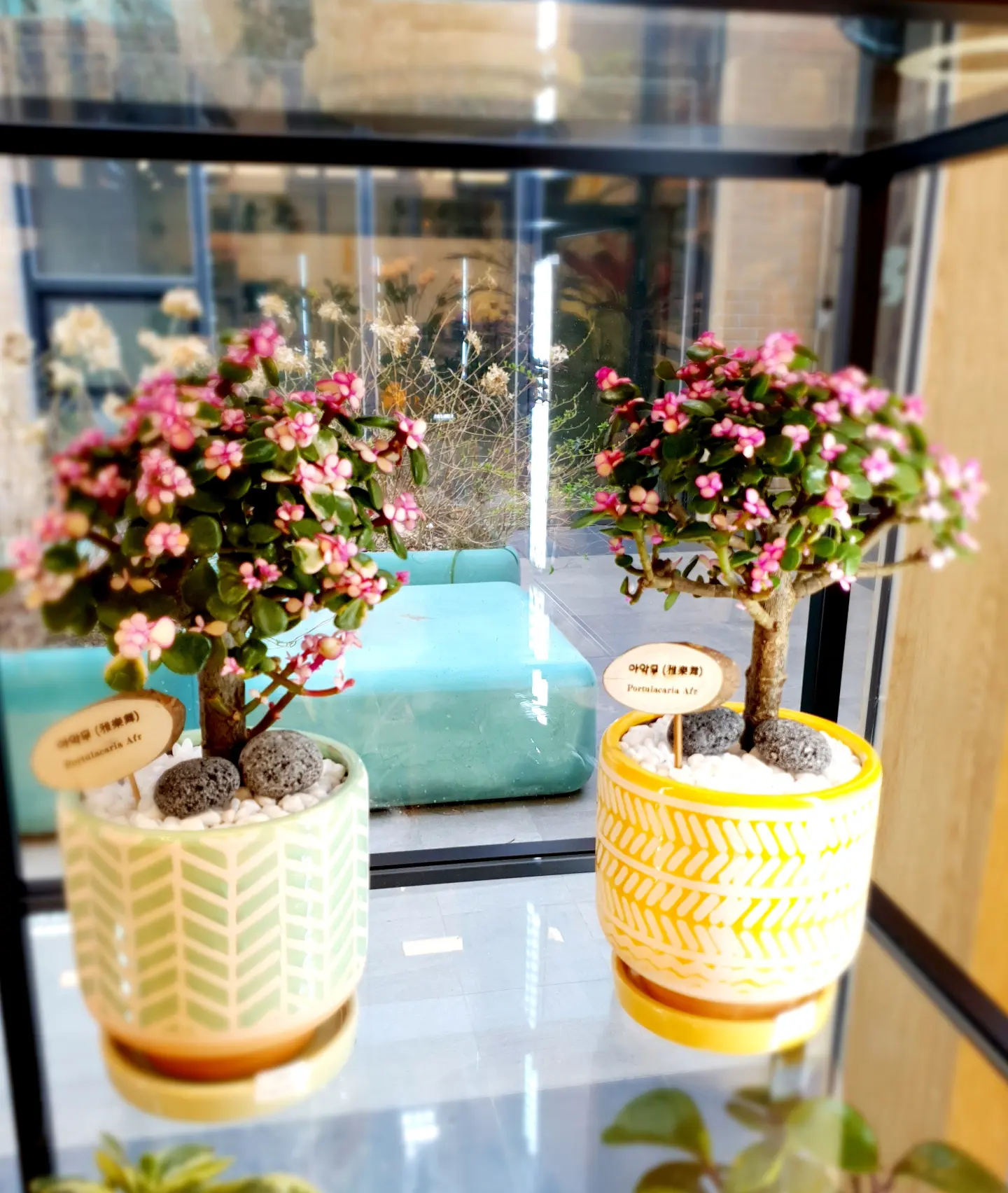Plants have always been an important part of our lives. They provide us with oxygen, food and beautiful scenery. Today, I would like to introduce Elephant bush(In Korea, 'Aakmu'), a succulent plant that makes you imagine relaxing under the shade of a tree in full bloom with pink flowers. Let's find out what this amazing plant is, how to grow and care for it, and some interesting facts about this unique plant.

What about Elephant bush?
Elephant bush, also known as Dwarf Jade Plant or Spekboom, is a plant native to South Africa. It belongs to the Portulacaceae family and is commonly grown as a houseplant or outdoor shrub in warm climates. This succulent has thick, round, glossy leaves that store water, making it a drought-tolerant plant. The stems are reddish-brown and can grow up to 4 m in their natural habitat. Its scientific name is Portulacaria afra and its English nickname is elephant bush. In South Africa, elephants eat this plant as food. It is said that that is why it was named that way. In Korea, it is distributed under the name Aakmu (雅樂舞). It has a pretty meaning, “a simple and enjoyable dance.”

How to care Elephant bush?
1. Choose the right pot and soil
To grow Elephant bush , you need a pot with well-draining soil and well-draining holes. It is best to mix cactus or succulent soil, perlite, and sand, or increase the ratio of masato to topsoil. The pot should be slightly larger than the root ball and you should only water when the soil is completely dry.
2. Breeding Elephant bush
Elephant bush is easy to propagate using stem cuttings. Cut the stems, remove the lower leaves, and let the cuttings dry for a day or two. Plant the cutting in a pot with well-draining soil, water sparingly and wait for roots to form. Once the roots sprout, you can just grow them from then on. Very easy, right?
3. Sunlight and growth temperature
Elephant bush needs bright, indirect sunlight to thrive. However, direct sunlight can burn the leaves. Therefore, it is best to place it in a bright location with short periods of direct sunlight. They also prefer warm temperatures and can tolerate temperatures as low as 10°C, but their favorite growing temperature is between 18°C and 26°C.
4. Watering and fertilizing Elephant bush
Elephant bush needs to be watered intermittently, preferably when the soil is completely dry. The time it takes for the soil to completely dry in an ordinary flower pot is approximately 20 to 30 days. It varies slightly depending on the environment in which the pot is placed, and in particular, too much water can cause the roots to rot and kill the plant. It is very vulnerable to overwatering, so people who pay too much attention to the plant can easily kill it. It is best to pay less attention and give it periodically, once or twice a month. Fertilize Elephant bush with diluted liquid fertilizer once a month during the growing season.
5. Pruning and tree shape adjustment of Elephant bush
If you don't prune your Elephant bush regularly, it can become leggy and top heavy. Cut back the plant by pinching off the growing tips or cutting off the stems to encourage bushier growth. In Japan, this tree is called a Jade Tree and is grown as a bonsai by wrapping wire around it and growing it as a bonsai. In Korea, it is popular to adjust the tree shape and distribute it in the form of a tree on a stand, as shown in the photo.
6. Pest and disease management
While Elephant bush is vulnerable to overwatering, it is rather resistant to pests and diseases. However, the sweet leaves can attract mealybugs, spider mites, and scale insects. These pests can be easily eliminated by spraying the plants with water and dish soap or diluted insecticide.

Interesting facts about Elephant bush
- Elephant bush is commonly used in bonsai and is believed to bring good luck.
- It is edible and is used in salads, stews and soups in South Africa.
- Elephant bush gets its name because it is eaten by elephants in the wild.
- The pink part of Elephant bush is not a flower but a leaf. These pink leaves are known to be a mechanism for plant adaptation. In other words, it is said to be discoloration for survival. This part is also free of toxins and is used as food.
'관엽식물' 카테고리의 다른 글
| How do you make an olive tree produce fruit? (2) | 2024.01.06 |
|---|---|
| Coconut palm tree with amazing fruit roots (2) | 2024.01.04 |
| Beautiful flower viewing all year round - Anthurium (2) | 2024.01.02 |
| Colorful striped Calathea Orbifolia (0) | 2024.01.02 |
| Would you like to grow a Gardenia jasminoides whose scent is intoxicating? (0) | 2024.01.01 |




댓글